This post will show the new features released in Microsoft Intune Service Release 2208 August Update. Microsoft release updates as frequently as every week. Here specifically, you will get an overview of Intune monthly release updates.
Every update contains new features, bug fixes, and, most importantly, new capabilities. It allows you to try out new features and provide the best experience. You can get more information about updates by knowing the Intune service release.
The Service Release number in the Tenant Status blade in your console shows the released update. The new features are publicly available and provide an overview of the current release. This is published once Microsoft starts rolling out the admin UI updates in the console.
Intune Service Health messages keep all health messages for the Intune service in one place. The health page is designed to inform you about known issues so you can troubleshoot issues your users may be experiencing and determine when and at what scale, to deploy an update in your organization.
- Intune Version Numbers -Service Release Numbers with Feature Details
- Intune Security Baselines Policies for Windows 10 or Windows 11 Deployment Guide
Intune Monthly Update Details
The update and some features may roll out over several weeks and might not be available to all customers in the first week. The order and duration vary.
Each monthly update may take up to three days to roll out and will be in the following order.
- Day 1: Asia Pacific (APAC)
- Day 2: Europe, Middle East, Africa (EMEA)
- Day 3: North America
- Day 4+: Intune for Government
Check Microsoft Intune Service Release Version
I will show you how to check which Microsoft Intune service version your tenant is running. The following steps help you to check Intune service release version of your tenant.
- Sign in to the Microsoft Endpoint Manager admin center https://endpoint.microsoft.com.
- Navigate to Tenant Administration and select Tenant Status.
Under the Tenant Details tab, you will see the current service version for your account under “Service Release”. You can see the Intune Service release 2208 indicating the latest released version.

Intune Service Release Version numbers are named based on the YYMM format. For example, Here Service release version is 2208!” It means this version is released in August 2022.
Note – The service release number is a link that opens the What’s new in Intune article on Microsoft docs. Here you can get information about the latest features and updates to the Intune service.
New Features in Microsoft Intune Service Release 2208 – August 2022 Update
Learn what’s new to Microsoft Intune. Some features may roll out over several weeks and might not be available to all customers in the first week.
You can also find past release updates on the post, Intune Service Release 2207 New Features. Let’s check the new features and improvements added to Microsoft Intune Service Release 2208, August Update.
Import, create, and manage custom ADMX and ADML Administrative Templates
You can create a device configuration policy that uses built-in ADMX templates. In Microsoft Endpoint Manager admin center, select Devices > Configuration profiles > Create profile > Windows 10 and later for platform > Templates > Administrative templates.
Starting with Intune Service Release 2208, You can also import custom and third-party/partner ADMX and ADML templates into the Endpoint Manager admin center. Once imported, you can create a device configuration policy, assign the policy to your devices, and manage the settings in the policy.
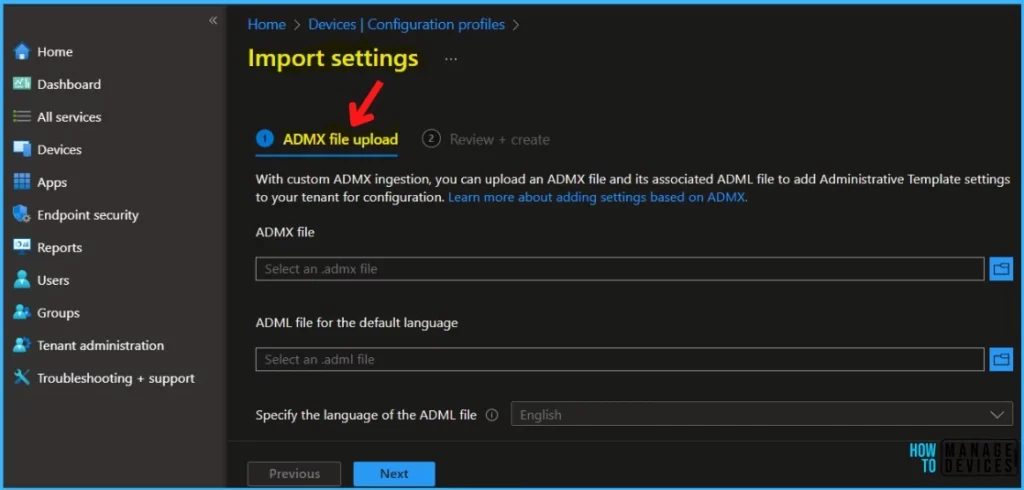
Newly Available Protected Apps for Intune
Intune protected apps are enabled with a rich set of mobile application protection policies. The following protected apps are now available for Microsoft Intune, starting with Intune Service Release 2208.
- Nexis Newsdesk Mobile by LexisNexis – Newsdesk delivers relevant news from all media types – online, print, social, and broadcast – in a single destination.
- My Portal by MangoApps (Android) – My Portal is an all-in-one app for a mobile-first workplace. It brings communication, collaboration, engagement, and training tools into one comprehensive portal for your company.
- Re:Work Enterprise by 9Folders, Inc. – Re:Work Enterprise, an email client app using ActiveSync, is a secure, safe, and convenient email client.
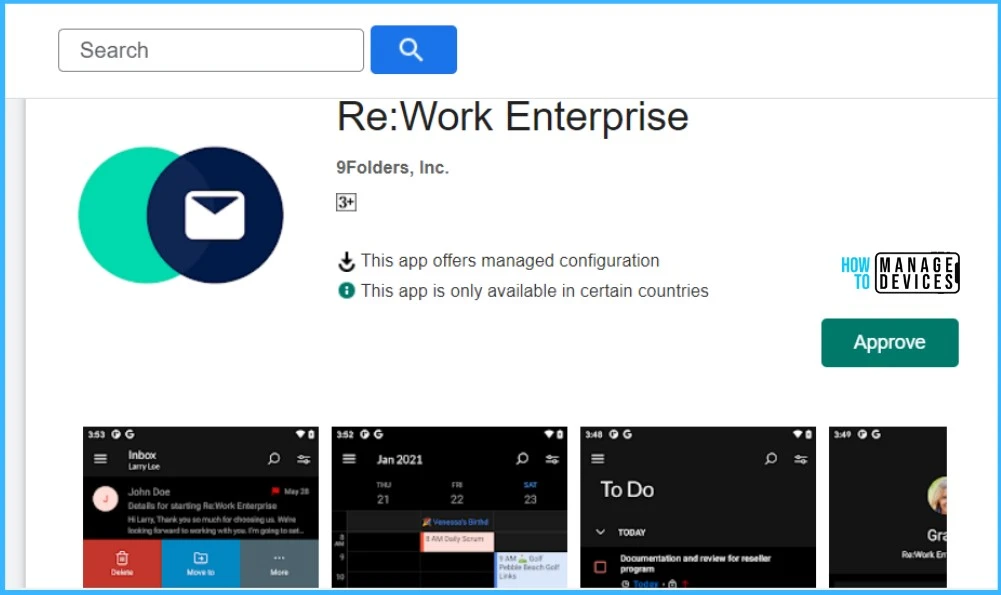
Custom Settings for Windows 10/11 Device Compliance is now Generally Available
Support to create custom compliance policy settings for Windows devices using PowerShell scripts, and to create custom compliance rules and remediation messages that appear in the Company Portal, is now generally available.
Bulk Install Windows Apps In Intune Company Portal
The Company Portal for Windows now allows users to select multiple apps and install them in bulk. From the Apps tab of the Company Portal for Windows, select the multi-select view button on the top right corner of the page.
Then, select the checkbox next to each app you need to install. Next, select the Install Selected button to start the installation.
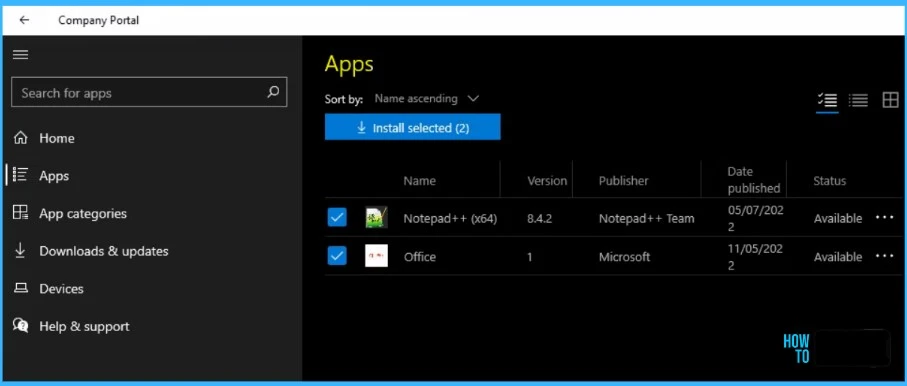
Add an HTTP proxy to Wi-Fi device configuration profiles on Android Enterprise
Starting with Intune Service Release 2208, you can create a Wi-Fi device configuration profile on Android Enterprise devices with basic and enterprise settings.
- In the Microsoft Endpoint Manager admin center, select Devices > Configuration profiles > Create profile > Android Enterprise > Fully Managed, Dedicated, and Corporate-Owned Work Profile for platform > Wi-Fi.
When you create the profile, you can configure an HTTP proxy using a PAC file or configure the settings manually. You can configure an HTTP proxy for each Wi-Fi network in your organization.
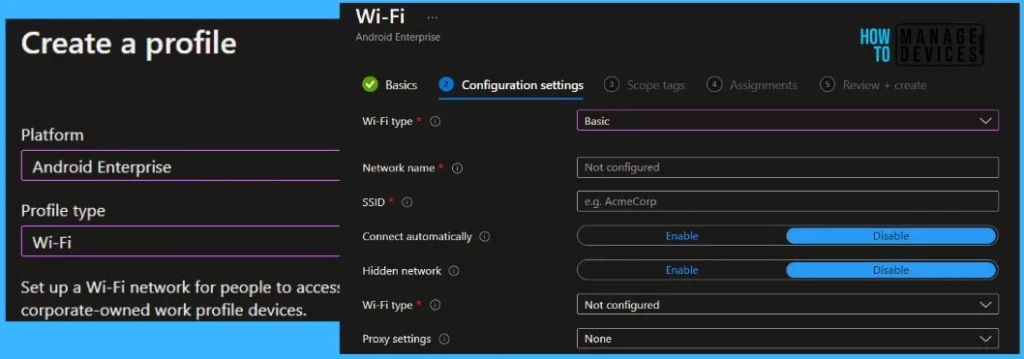
When the profile is ready, you can deploy this profile to your Fully Managed, Dedicated, and Corporate-Owned Work Profile devices.
Reset passcode remote action available for Android (AOSP) Corporate devices
You’ll be able to leverage the Reset passcode remote action from the MEM admin center for Android Open Source Project (AOSP) Corporate devices.

Certificate profiles support for Android (ASOP) devices
You can now use Simple Certificate Enrollment Protocol (SCEP) certificate profiles with corporate-owned and userless devices that run the Android Open Source Project (AOSP) platform.
New iOS/iPadOS and macOS settings available in the Settings Catalog
The Intune Settings Catalog lists all the settings you can configure in a device policy all in one place. There are new settings available in the Settings Catalog.
Navigate to the Devices > Configuration profiles > Create profile > Platform iOS/iPadOS or macOS> Settings catalog for profile type.
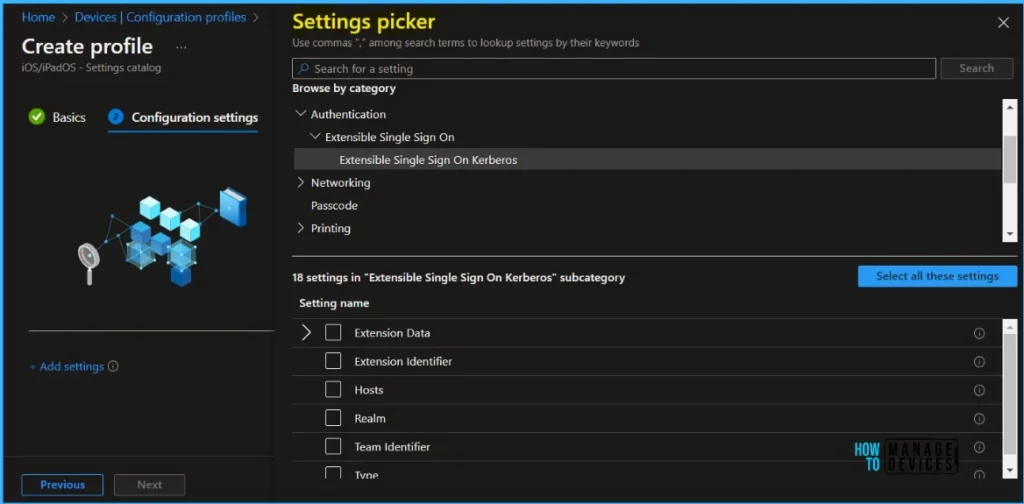
macOS Settings
Starting with Intune Service Release 2208, There are new macOS settings available in the Settings Catalog.
- Microsoft Auto Update:
- Current Channel
- Number of minutes for the final countdown timer
- Restrictions:
- Allow Universal Control
- Authentication > Extensible Single Sign On:
- Extension Data
- Extension Identifier
- Hosts
- Realm
- Screen Locked Behavior
- Team Identifier
- Type
- URLs
- Authentication > Extensible Single Sign On > Extensible Single Sign On Kerberos:
- Extension Data
- Allow Automatic Login
- Allow Password Change
- Credential Bundle ID ACL
- Credential Use Mode
- Custom Username Label
- Delay User Setup
- Domain Realm Mapping
- Help Text
- Include Kerberos Apps In Bundle ID ACL
- Include Managed Apps In Bundle ID ACL
- Is Default Realm
- Monitor Credentials Cache
- Perform Kerberos Only
- Preferred KDCs
- Principal Name
- Password Change URL
- Password Notification Days
- Password Req Complexity
- Password Req History
- Password Req Length
- Password Req Min Age
- Password Req Text
- Require TLS For LDAP
- Require User Presence
- Site Code
- Sync Local Password
- Use Site Auto Discovery
- Extension Identifier
- Hosts
- Realm
- Team Identifier
- Type
New iOS/iPadOS settings in the Settings Catalog
There are new iOS/iPadOS settings available in the Settings Catalog, and Previously, these settings were only available in Templates.
- Authentication > Extensible Single Sign On:
- Extension Data
- Extension Identifier
- Hosts
- Realm
- Screen Locked Behavior
- Team Identifier
- Type
- URLs
- Authentication > Extensible Single Sign On > Extensible Single Sign On Kerberos:
- Extension Data
- Allow Automatic Login
- Credential Bundle ID ACL
- Domain Realm Mapping
- Help Text
- Include Managed Apps In Bundle ID ACL
- Is Default Realm
- Preferred KDCs
- Principal Name
- Require User Presence
- Site Code
- Use Site Auto Discovery
- Extension Identifier
- Hosts
- Realm
- Team Identifier
- Type
- System Configuration > Lock Screen Message:
- Asset Tag Information
- Lock Screen Footnote
iOS/iPadOS Settings Catalog Supports Declarative Device Management (DDM)
Starting with Intune Service Release 2208, On iOS/iPadOS 15+ devices enrolled using User Enrollment, the settings catalog automatically uses Apple’s declarative device management (DDM) when configuring settings.
- No action is required to use DDM. The feature is built into the settings catalog.
- There is no impact to existing policies in the settings catalog.
- iOS/iPadOS devices that aren’t enabled for DDM continue to use Apple’s standard MDM protocol.
